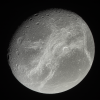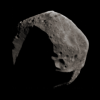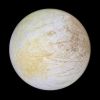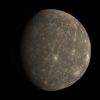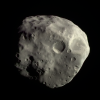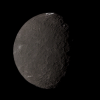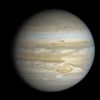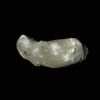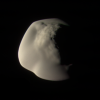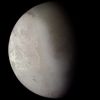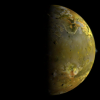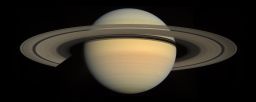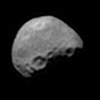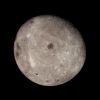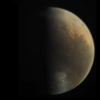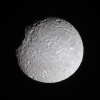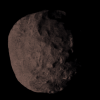Emily Lakdawalla • Dec 17, 2009
Planetary Society Advent Calendar for December 17: Proteus
Proteus is a weird name for this world. It's the second-largest moon of Neptune, and so it's named (as are all of Neptune's moons) for deities associated with the sea. But in my mind the name has a stronger association with the adjective "protean," meaning "changeable" or "mutable." Yet this little world orbiting the most distant known planet is more than likely hard as a rock and hasn't changed in billions of years. It would have been a more appropriate name for Triton, which has probably changed its skin, starting out life as a Kuiper belt object and later becoming an outer planet moon, suffering enough internal heating in the process to wipe its surface of craters and even maybe drive some geyser activity.
But Proteus is the name that was given to this other moon of Neptune. We didn't even know it existed until the Voyager 2 flyby, because it orbits so close to Neptune and is so very dark, with an albedo under 10%. That makes it much darker than your average icy moon of the outer solar system. It also meant that Voyager 2's camera -- which had a hard time taking pictures at all in Neptune's neighborhood, where the Sun is so much dimmer than it was at Jupiter or Saturn -- could barely gather enough light from Proteus to image it. As a result, the images of Proteus are very, very noisy, and according to Ted Stryk the data for the image below varied over a range of only six levels of gray when he started working. So this image is the result of very extensive processing to try to boost the weak signal from features on Proteus' surface; it has been colorized based upon more distant shots of the moon. There are large-scale features that are definitely real -- like what appears to be a big impact scar on the terminator, and several smaller, round impact features -- but there's also a fine-scale brush-strokey texture that results from the processing and is probably not real. Overall, though, it's an amazing piece of work with some really, really awful data.
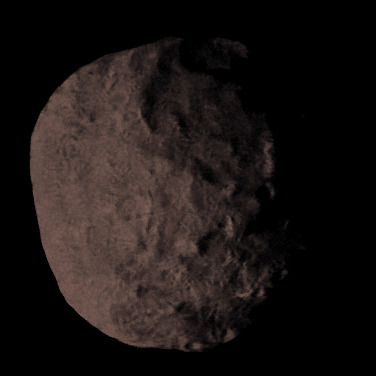
Interestingly, Proteus is just about the same size as Mimas (Proteus has a diameter of 416 kilometers versus Mimas' 397) but is much more lumpy. Why? I don't know. It probably has to do with the story I was trying to get at yesterday about the interplay between the timing of the formation and cooling of these moons and the biggest impacts that produced their shapes. Proteus is denser than Mimas. Proteus is also, despite its small size, the biggest thing in the Neptune system after Triton. Triton's capture may have tossed around Neptune's moons; I wonder if Proteus is all that's left of a larger, former moon, a Tethys or Rhea, that was smashed to bits when Triton came in? It'll be tough to learn more about Proteus without at least another flyby.
Each day in December I'm posting a new global shot of a solar system body, processed by an amateur. Go to the blog homepage to open the most recent door in the planetary advent calendar!
Support our core enterprises
Your support powers our mission to explore worlds, find life, and defend Earth. You make all the difference when you make a gift. Give today!
Donate

 Explore Worlds
Explore Worlds Find Life
Find Life Defend Earth
Defend Earth


